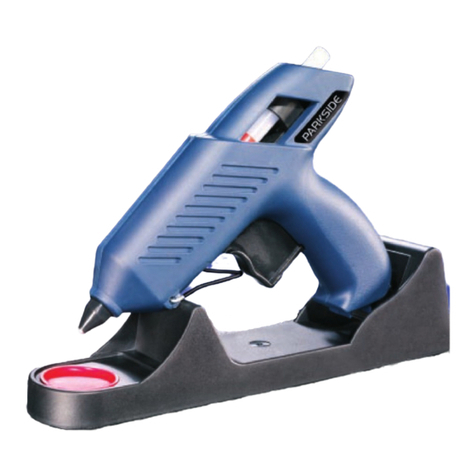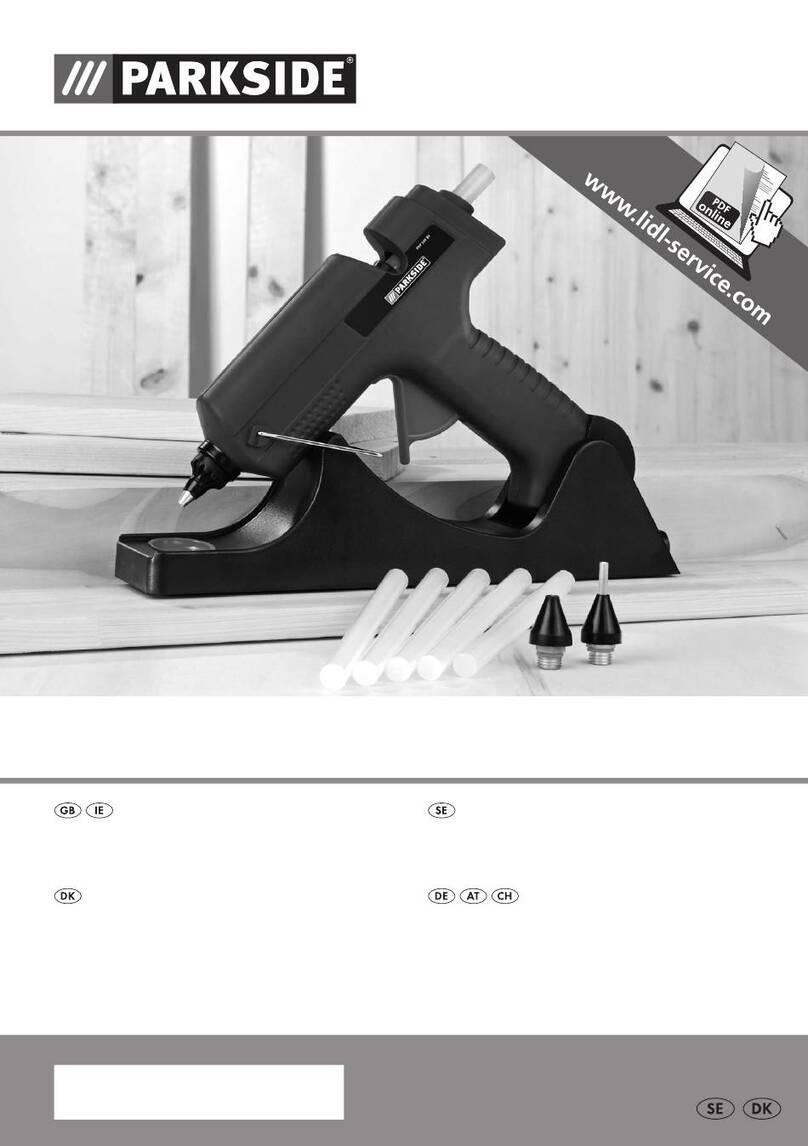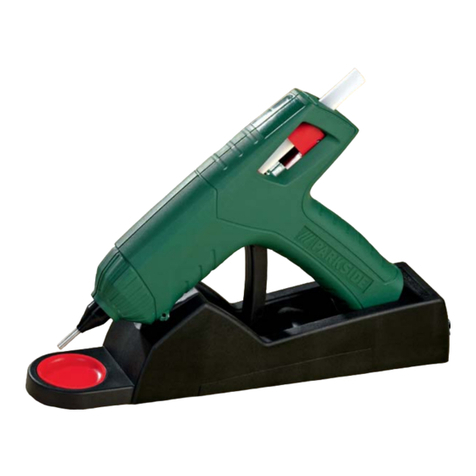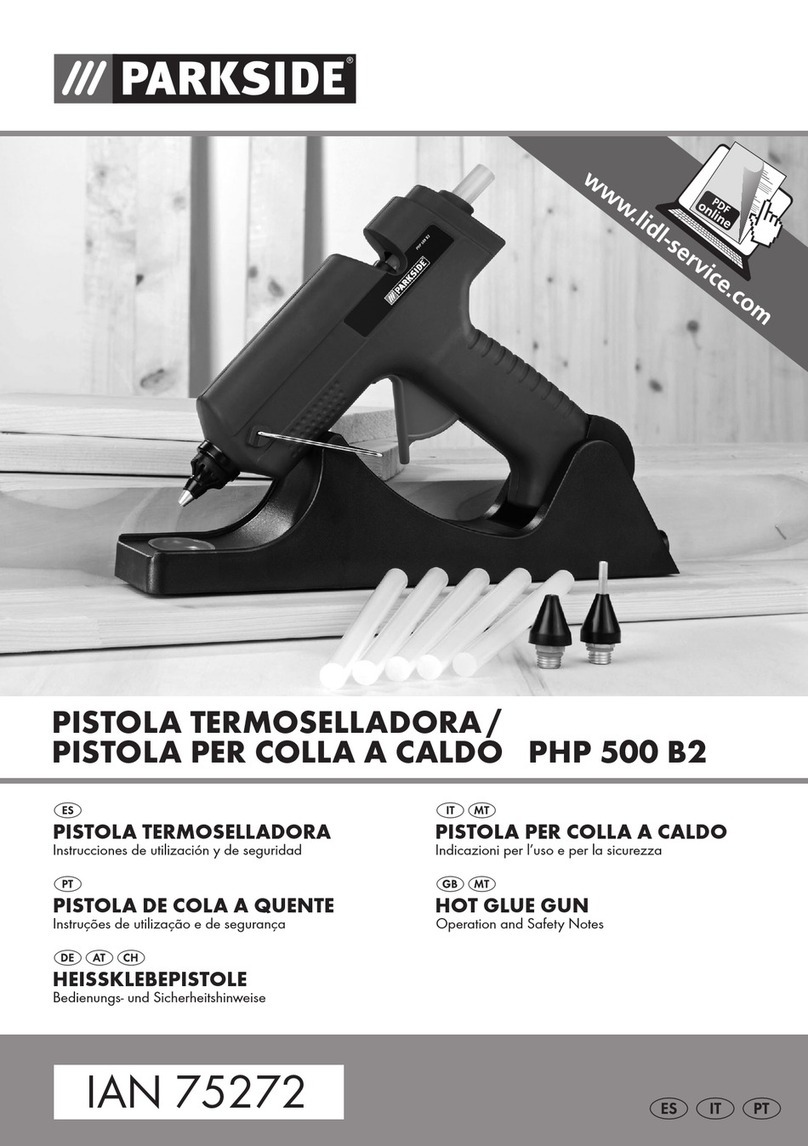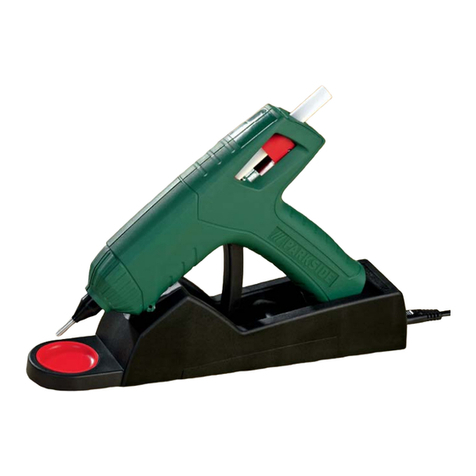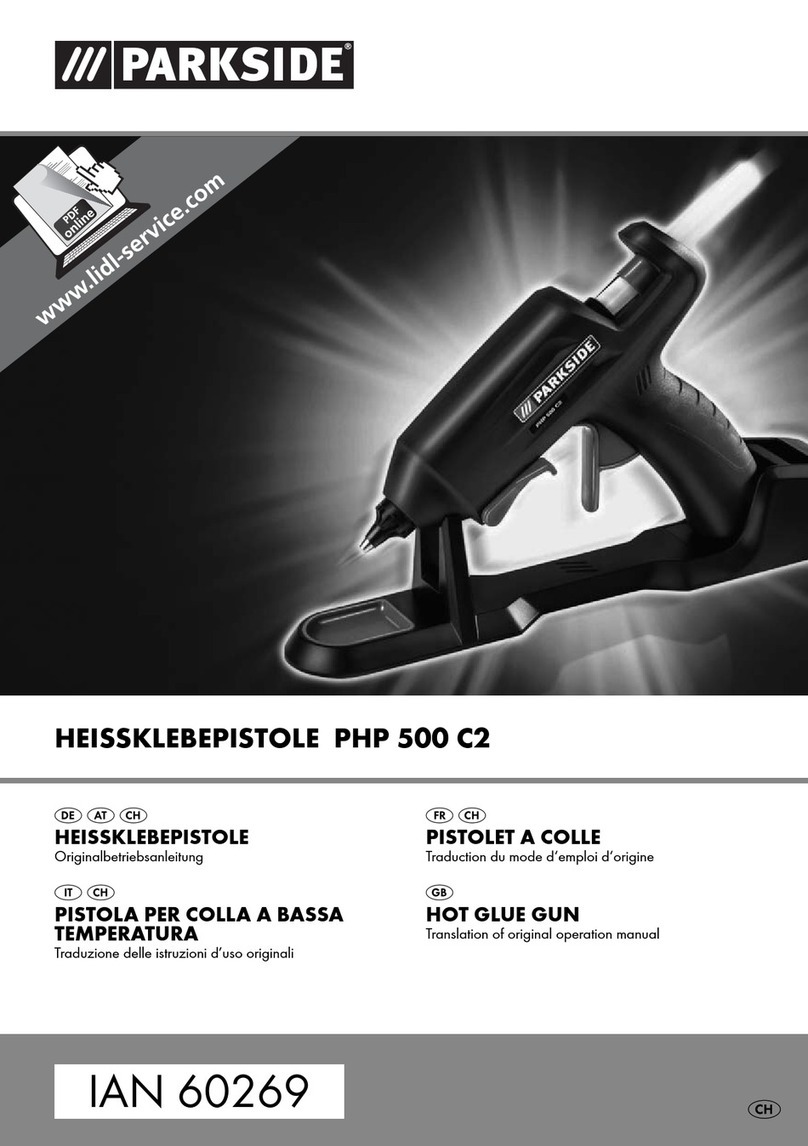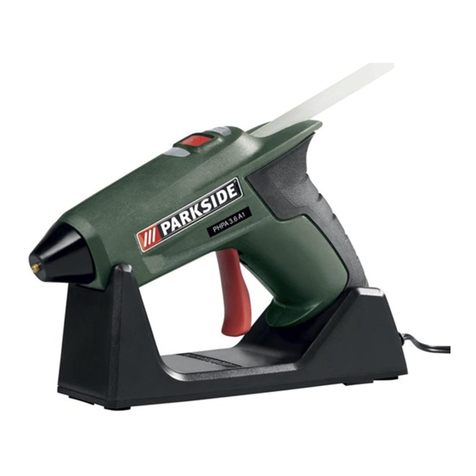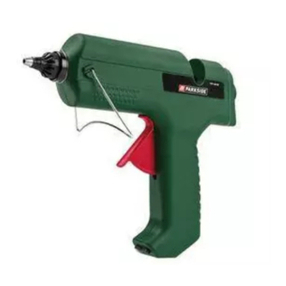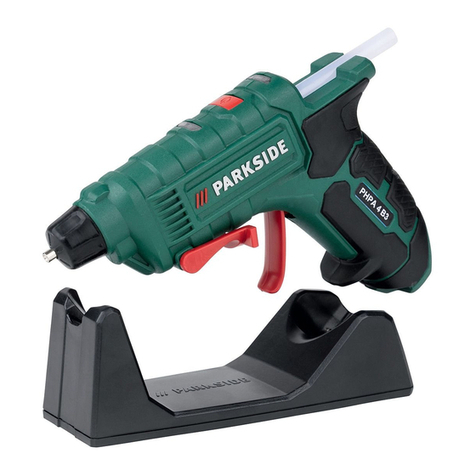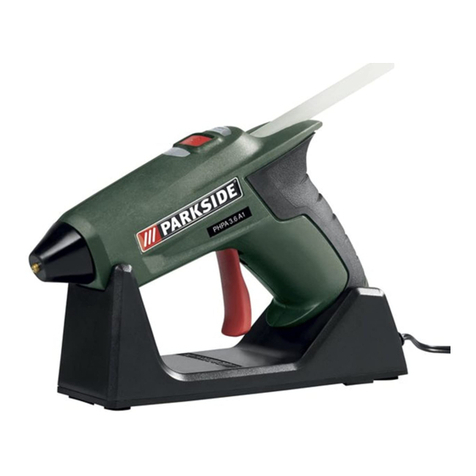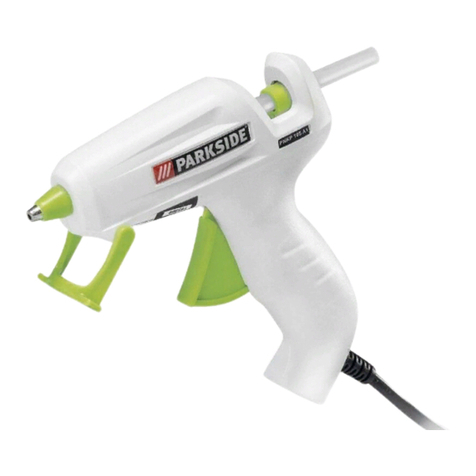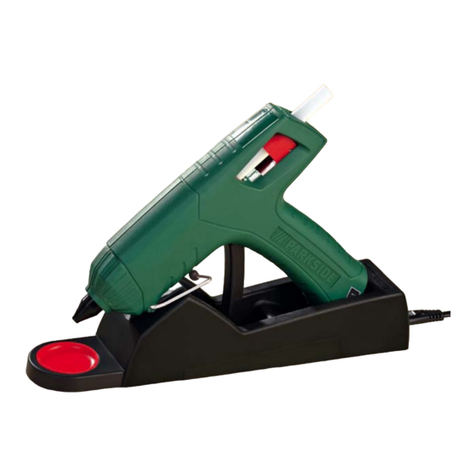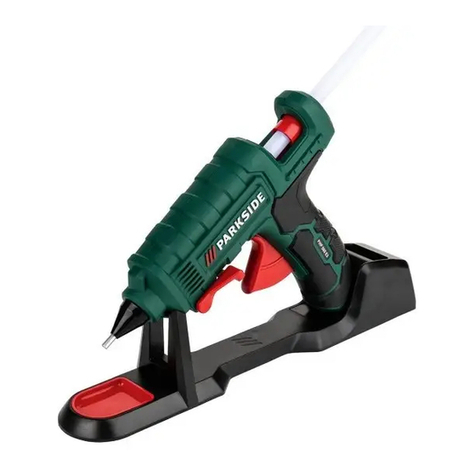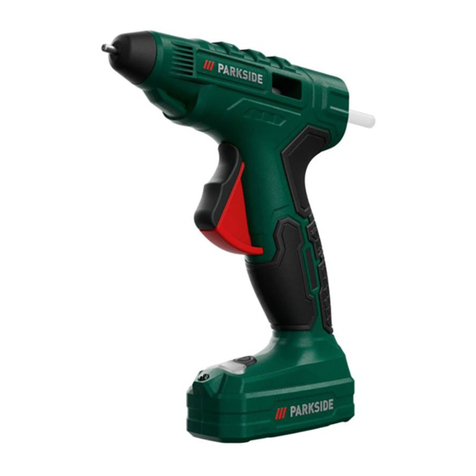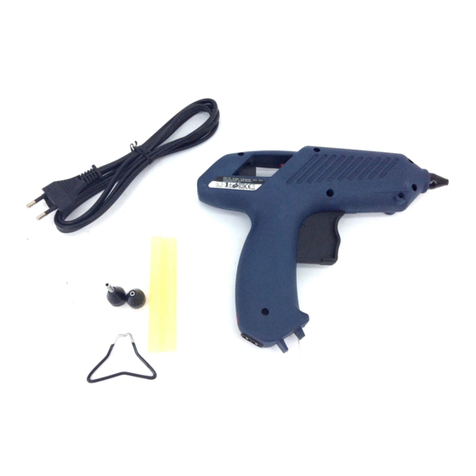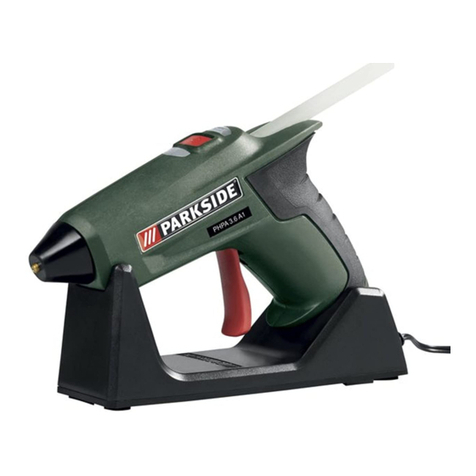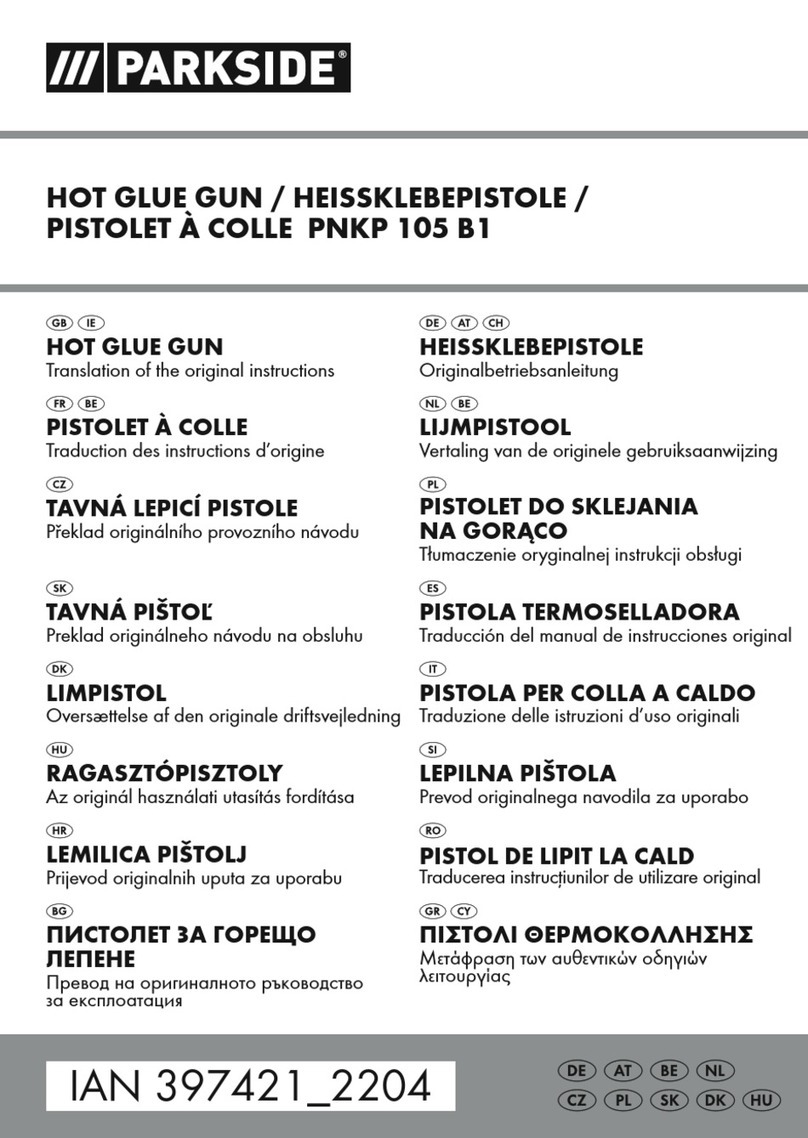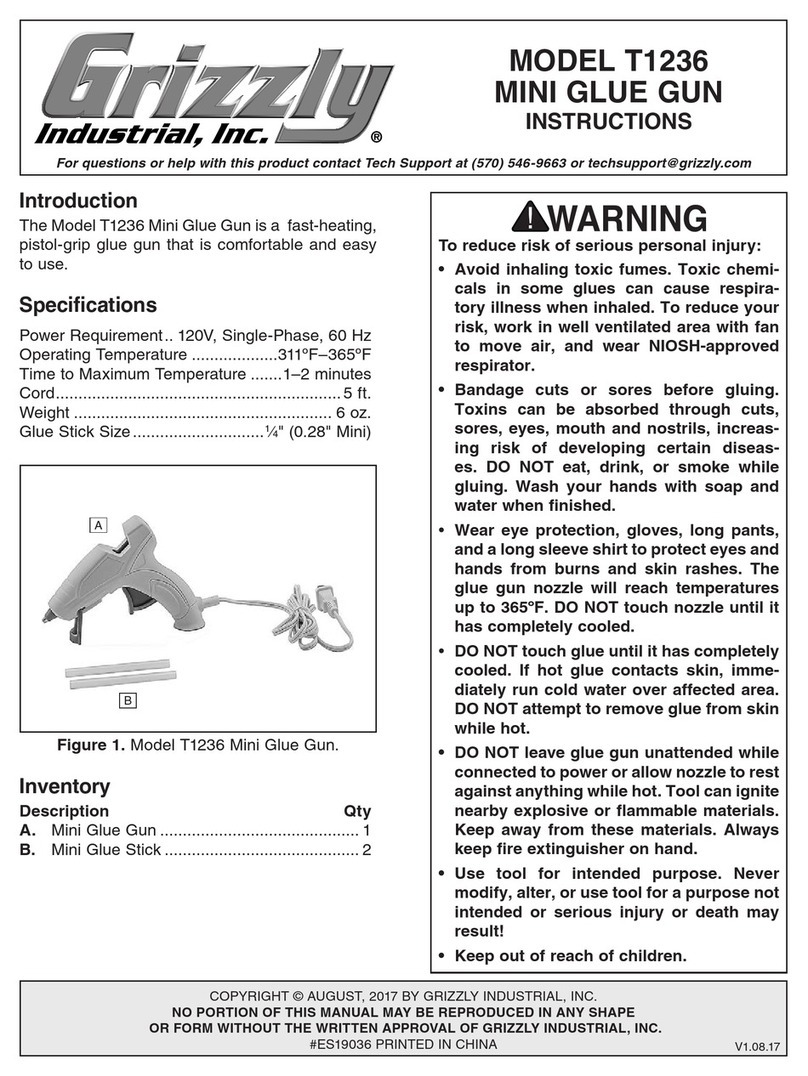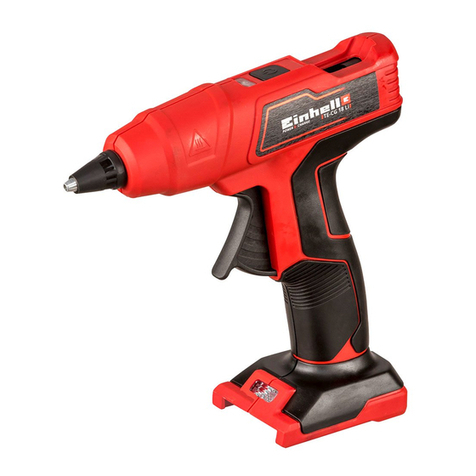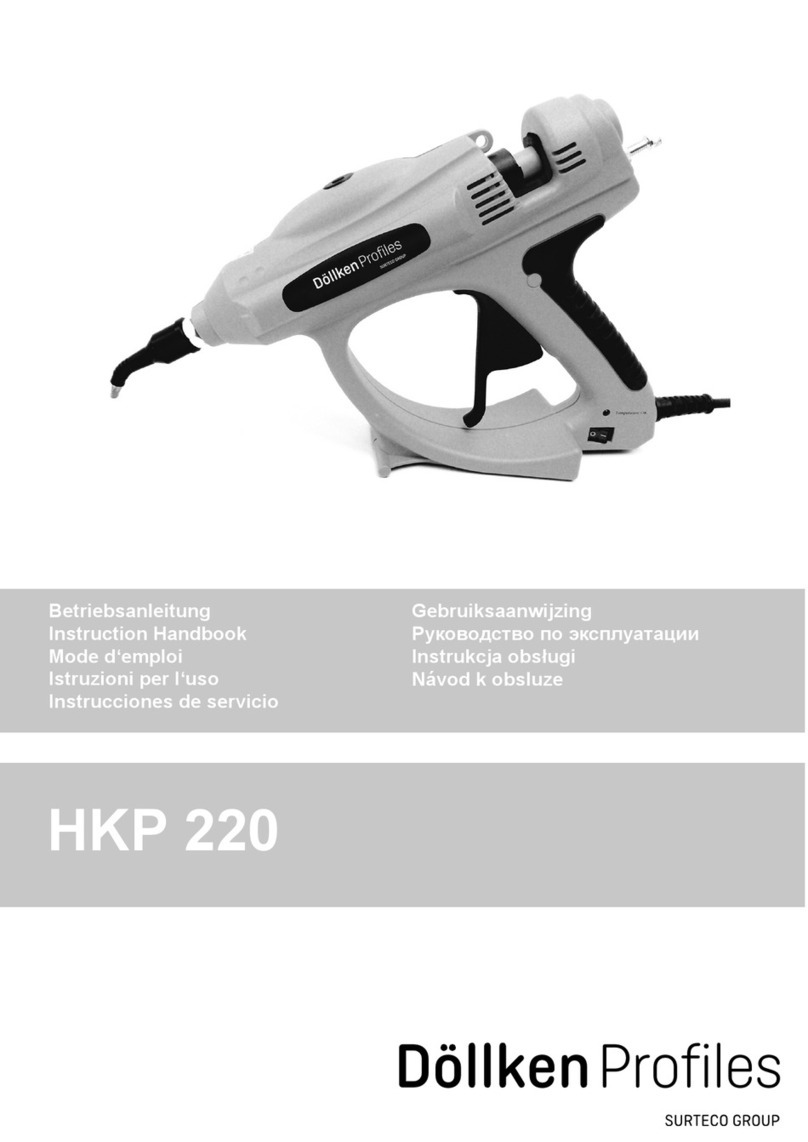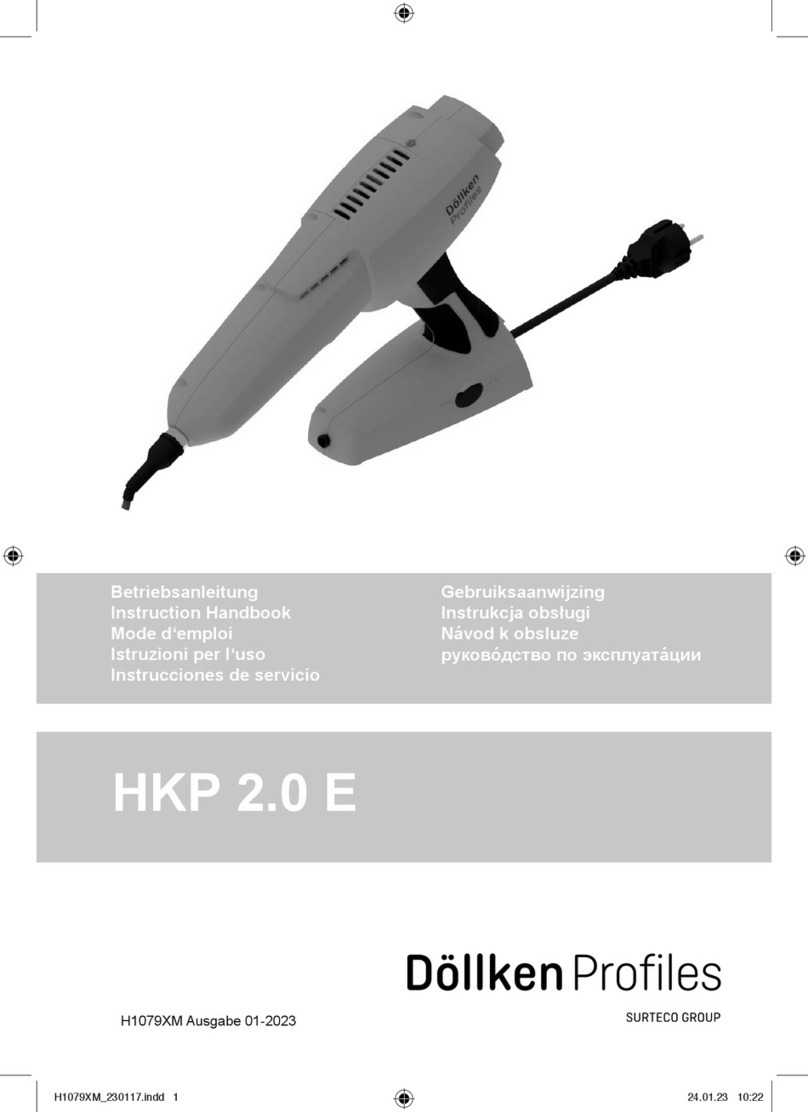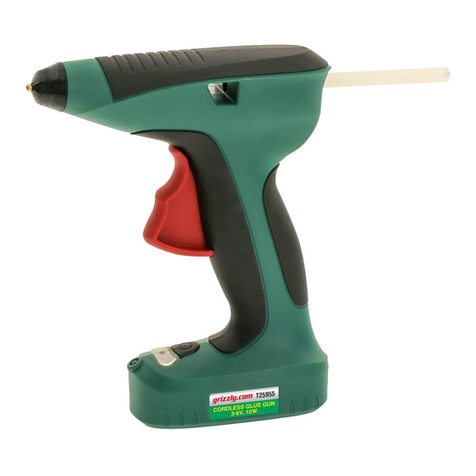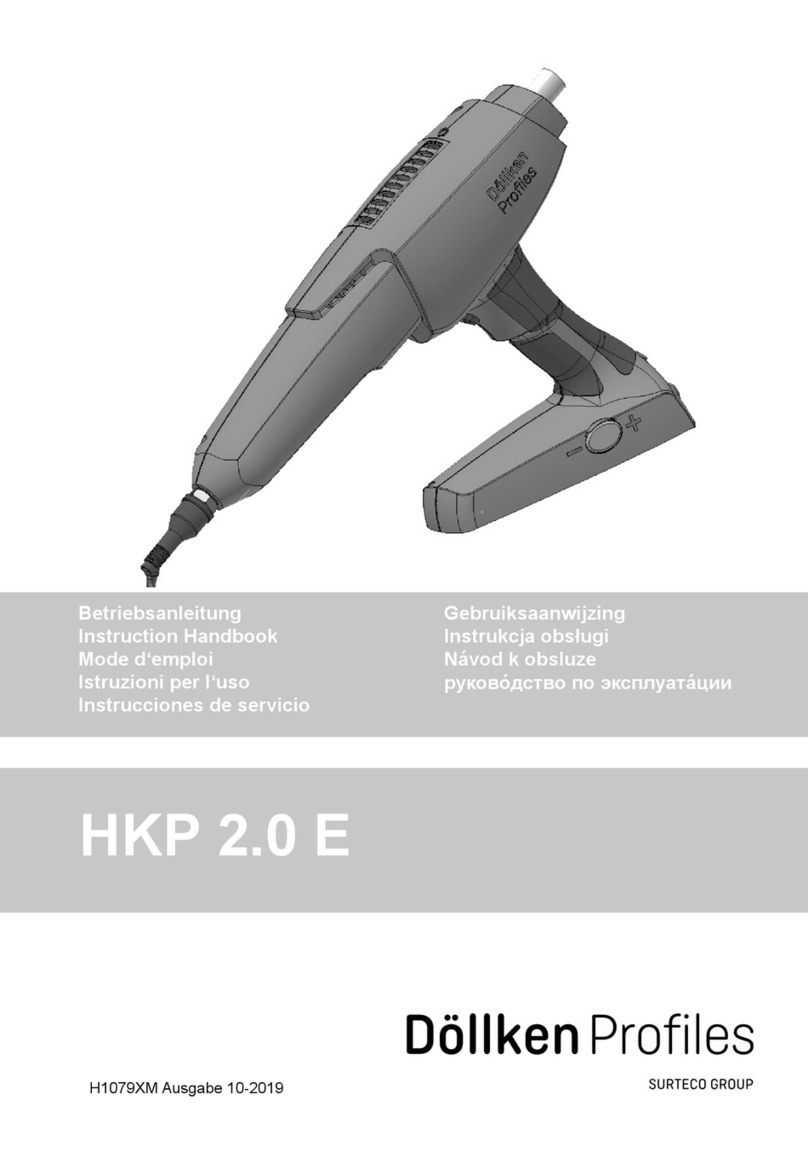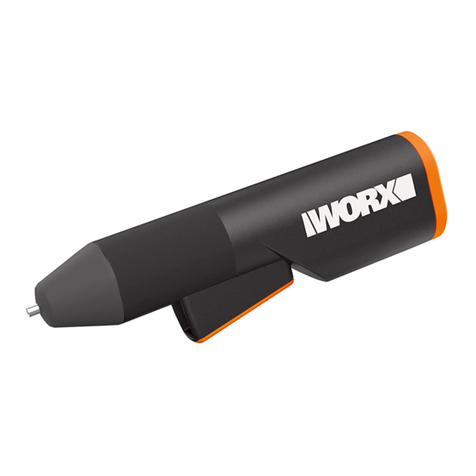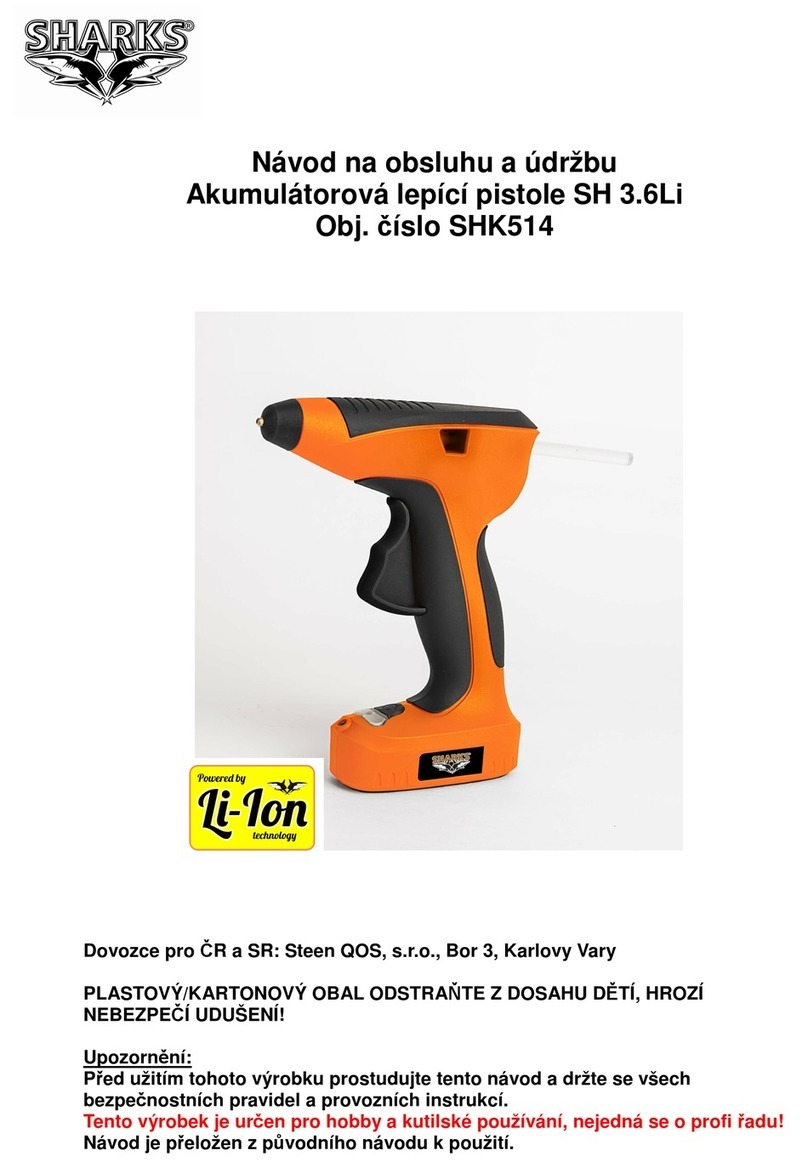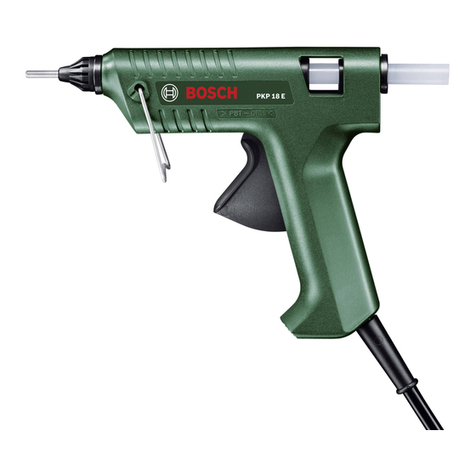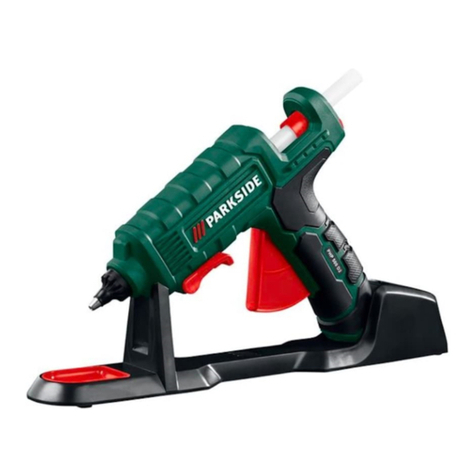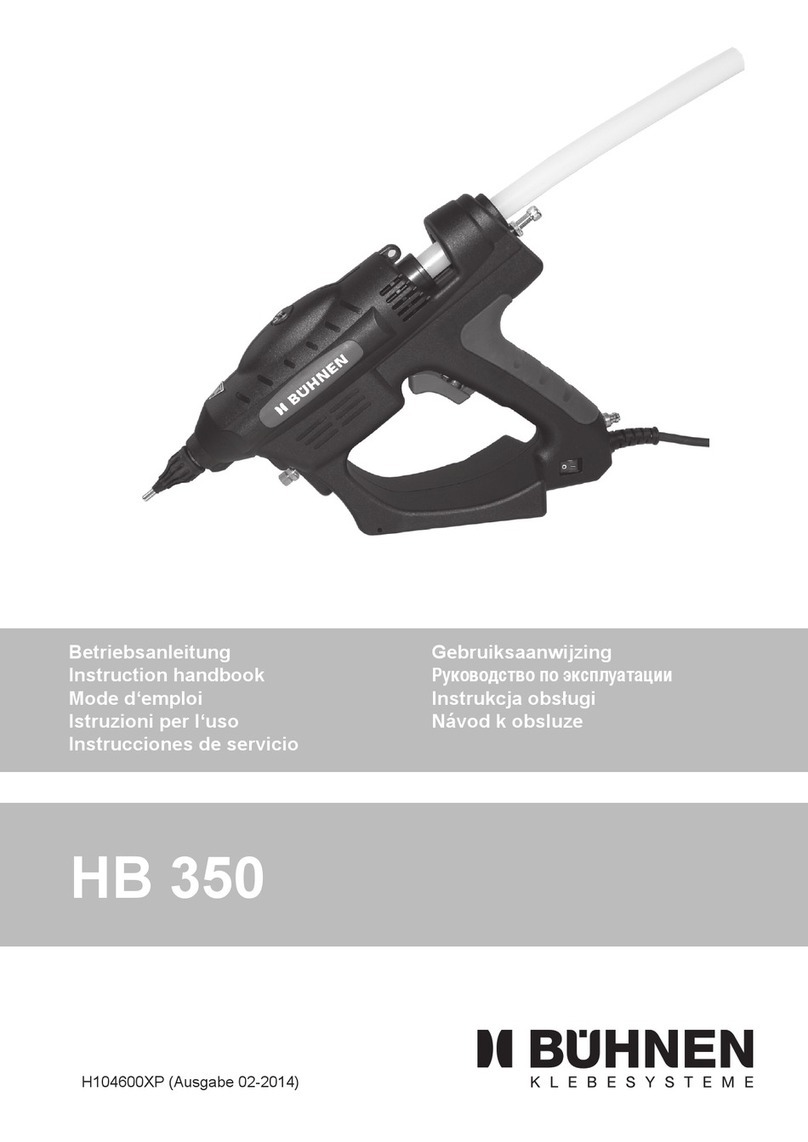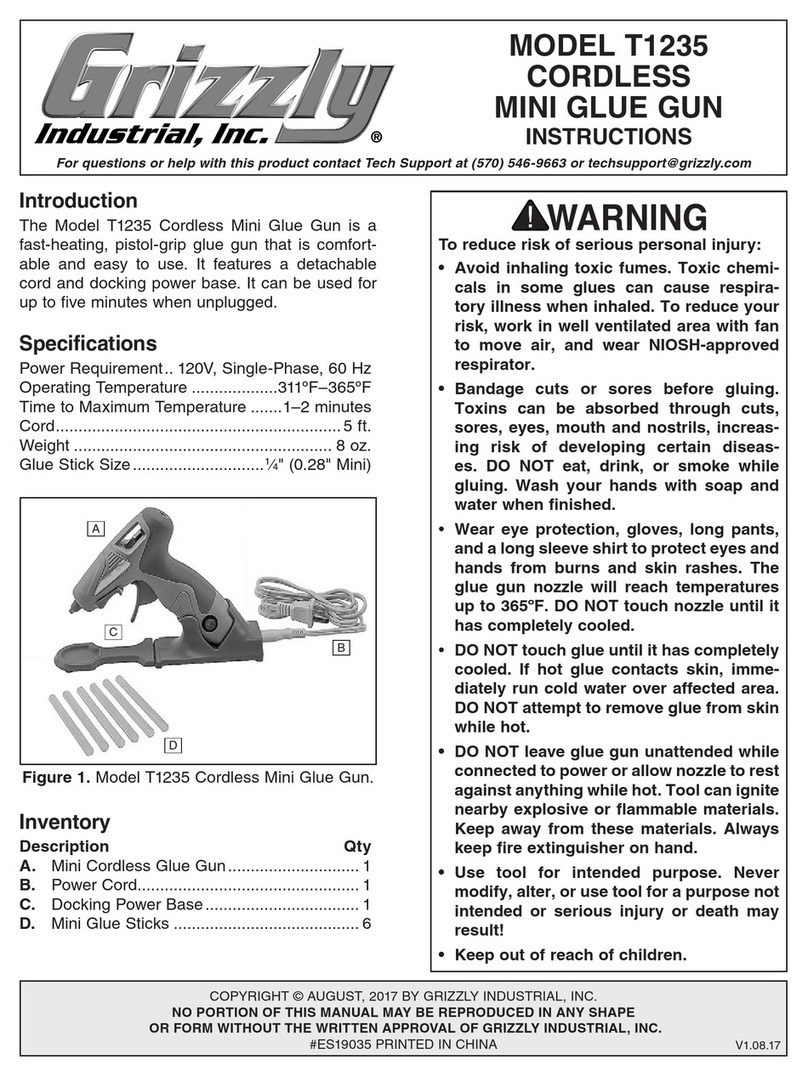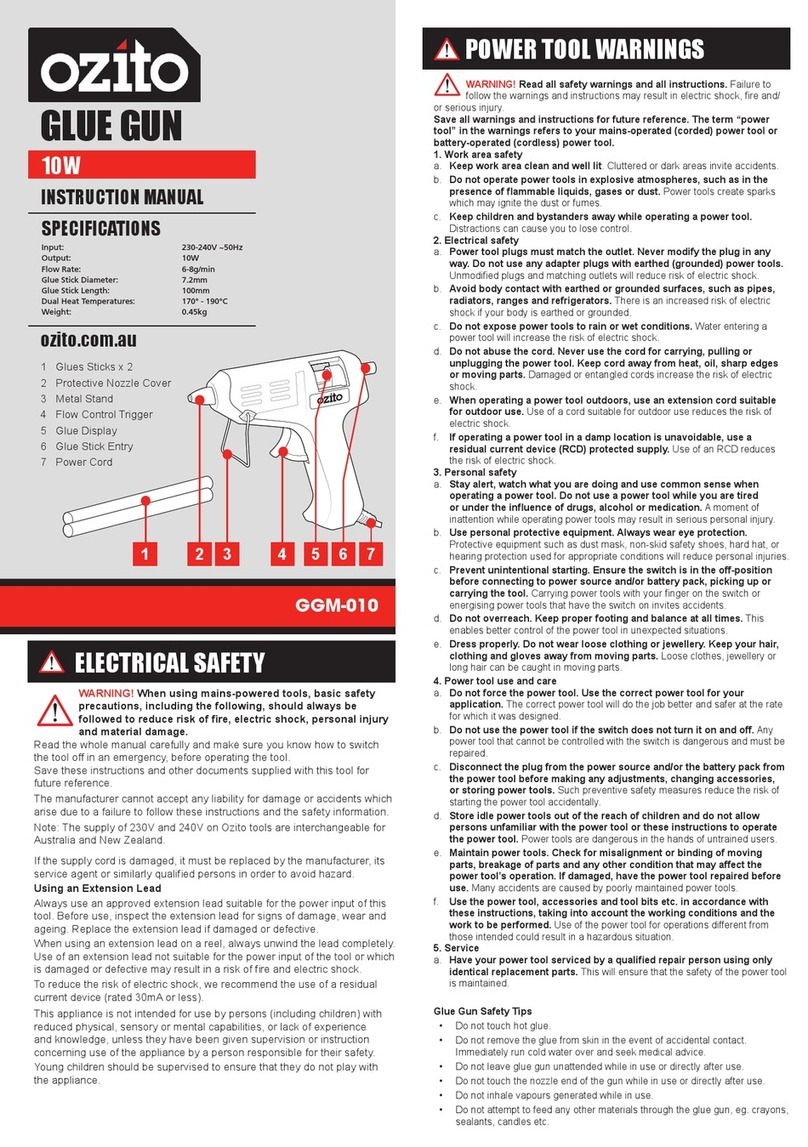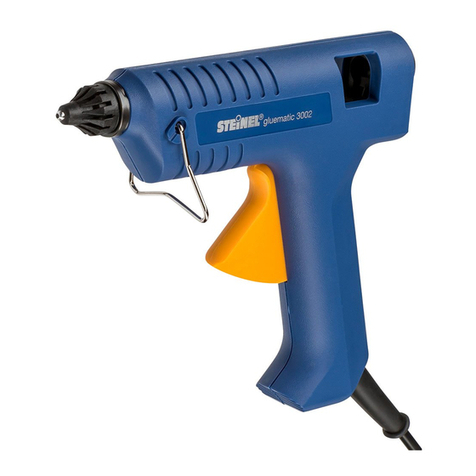
www.ekt2.com
Electronics Katrangi Trading
www.ekt2.com
Electronics Katrangi Trading
with caution. Do not use the device if
you are tired or under the influence of
drugs, alcohol or medication. One mo
ment
of carelessness when using the device can lead
to serious injury.
b) To avoid the danger of injury, burning
and damage to health:
DANGER OF BURNS! The glue and the
nozzle can reach temperatures of 200°C. Do
not touch the nozzle or the glue. Keep other
people and animals away from the hot glue.
On contact with the skin, hold the affected part
under running cold water for several minutes.
Do not try to remove the glue from the skin.
4. Careful handling and use
of electrical power tools
a) Pull the mains plug from the socket
before you make any adjustments to
the device, change accessories or when
the device is put away. This precaution is
intended to prevent you from unintentionally
starting the device.
b) When not in use always ensure that
electrical power tools are kept out of
reach of children. Do not let anyone
use the device if he or she is not
familiar with it or has not read the
instructions and advice. Electrical power
tools are dangerous when they are used by
inexperienced people. Let the device cool
down completely before putting it away. The
hot nozzle can cause damage.
c) Look after the device carefully. Check
that moving parts are working prop-
erly and move freely. Check for any
parts that are broken or damaged
enough to detrimentally affect the
functioning of the device. Have dam-
aged parts repaired before you use
the device. Many accidents have their origins
in poorly maintained electrical power tools.
d) Always work with the mains lead leading
away from the rear of the device.
QOperation
QBefore first use
Preparing the glue site:
Do not use inflammable solvents to clean the
glue site.
The ambient temperature and temperature of
the materials to be glued must be not less than
+ 5° C and not warmer than + 50°C.
The glue sites must be clean, dry and free of
grease.
Smooth surfaces should be roughened before
gluing.
Warm any materials that are prone to cool
down quickly (e.g. steel) to improve the bond
with the glue.
Screw on the appropriate nozzle 8and fit
the wire stand 6.
QPreparing the tool for use
Working with the mains lead connected:
1. Connect the mains lead 11 to the glue gun
connection 10 (see Fig. F).
Insert the mains plug into the mains socket.
2. Fold forward the wire stand 6.
Stand the device up.
3. Push a glue stick into the feed channel 1.
4. Let the device heat up for about 5minutes.
The device is now ready for use.
Cordless working:
1. Connect the mains lead 11 to the charger
connection 3.
Insert the mains plug into the mains socket.
2. Place the glue gun into the charger 4.
3. Push a glue stick into the feed channel 1.
4. Let the device heat up for about 5 minutes.
The device is now ready for use.
5. Repeat the heating-up procedure if the feed
switch becomes stiff or the outcoming glue
becomes viscous.
Gluing:
Press the feed clamp 5to regulate the flow of
glue as required for your work.
1. Apply the glue in individual dots. Apply in zig-
zags on flexible materials such as fabrics.
2. Immediately after applying the glue, press the
two materials together for about 30 seconds. The
glued joint can be loaded after about 5 minutes.
3. When you take a break from work, set the
glue gun down on the wire stand 6or in the
charger 4.
4. Remove any glue residue with a sharp knife
after cooling. Glued joints can be loosened
again by applying heat.
Switching off the device:
Pull the mains lead out of the mains socket.
Changing the nozzle:
Wear protective gloves.
Heat up the device for about 5 minutes.
Change the nozzle 8when it is hot.
DANGER OF BURNS!
Touch the nozzle 8only by the heat shield 9.
The nozzle tip is hot!
Note: Hold item upright, tip up, to prevent glue
from flowing out.
QMaintenance and Cleaning
The glue gun is maintenance-free.
WARNING! Pull the mains lead out of the
mains socket before you clean the tool.
Always keep the device clean and dry.
Do not allow any liquids to enter the tool. Use
a soft cloth to clean the housing. Never use
petrol, solvents or cleaning agents that might
attack plastic.
